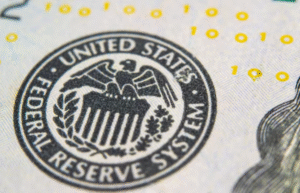$EURUSD $GC_F
#Eurozone #Inflation #ECB #MonetaryPolicy #InterestRates #Economy #FinancialMarkets #InflationTarget #Euro #EURUSD #BondYields #Macroeconomics
Eurozone inflation increased to 2% in October, slightly surpassing market expectations and matching the European Central Bank’s (ECB) target. This uptick in price growth will likely come as a surprise to some investors who had anticipated inflation to remain somewhat subdued. Analysts had initially forecasted an inflation rate closer to 1.9%, reflecting subdued energy prices and moderate supply chain conditions across the continent. However, the realized 2% figure is indicative of persistent price pressures, albeit within the ECB’s acceptable range. These developments signal that inflationary trends within key sectors such as energy, food, and services continue to warrant close attention.
The ECB, led by President Christine Lagarde, has set a medium-term objective of maintaining inflation at around 2%, and this latest data suggests the central bank’s policies are in line with its broader objectives. The ECB’s previous gradual tightening of its monetary policy, including tapering off its asset purchase programs and keeping interest rates at historically low levels, has likely played a role in keeping inflation near this target. Central bankers face the balancing act of stimulating economic growth while ensuring that inflation does not exceed manageable levels and hinder broader economic stability. Consequently, this inflation data could reinforce the ECB’s course of action in future policy meetings, possibly delaying any anticipated tightening measures until further assessments of economic resilience are made.
From a market perspective, these developments could influence several key variables, including bond yields and currency performance. The Euro, as captured in the $EURUSD pair, now finds itself at a potential inflection point. Following the inflation data, yields on government bonds could edge up, as bondholders typically expect higher returns in periods of rising inflation. Higher yields could, in turn, make the Euro more attractive to foreign investors, potentially strengthening the currency against major peers such as the US dollar. As inflation heats up, currency markets will likely monitor the ECB closely for any signals regarding future shifts in monetary policy. Investors may already begin adjusting their strategies to account for potential tightening in the medium term, which could ripple through FX markets.
In the broader financial landscape, this inflation figure touches various sectors including commodities, equities, and fixed-income assets. Gold prices, often viewed as a hedge against inflation, may respond positively to the inflation outlook, as seen in the movement of $GC_F (gold futures) in recent times. On the flip side, equity markets in the Eurozone could face headwinds due to rising inflation potentially squeezing margins for firms already contending with higher operating costs. However, if the ECB signals sustained support in terms of keeping rates low without aggressive tightening, stock markets might take such announcements as a sign of stability. Going forward, portfolio managers and investors will be weighing up the ECB’s next moves in this tightening or accommodative cycle, as inflation and monetary policy dynamics continue to drive sentiment and asset allocation decisions in European markets.










Comments are closed.